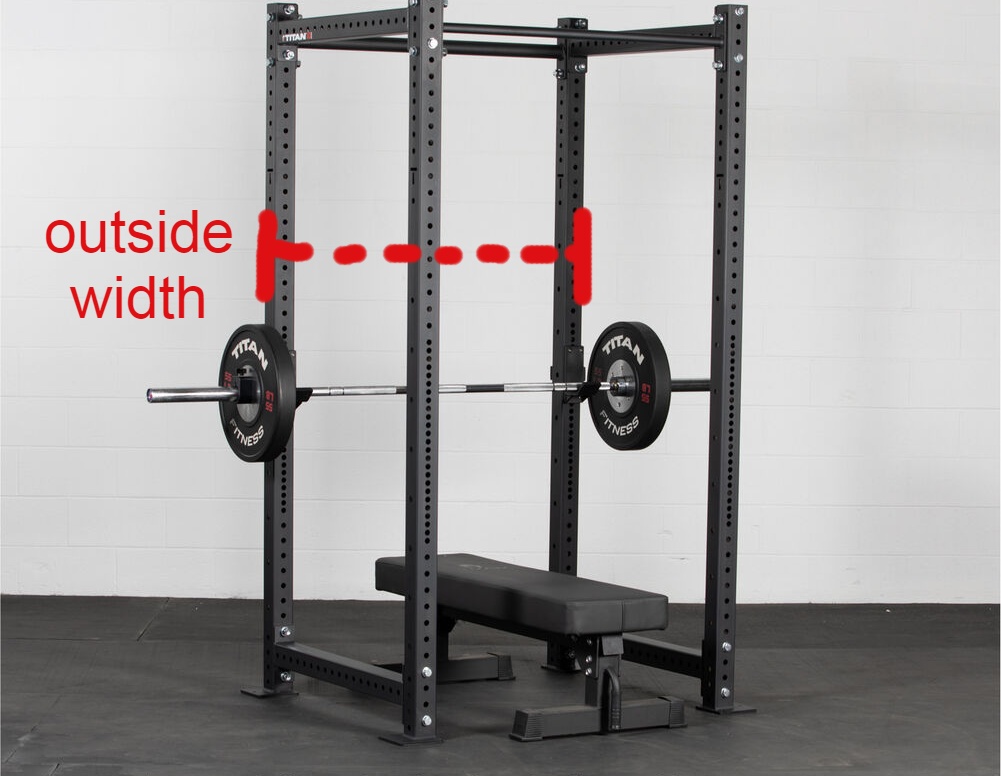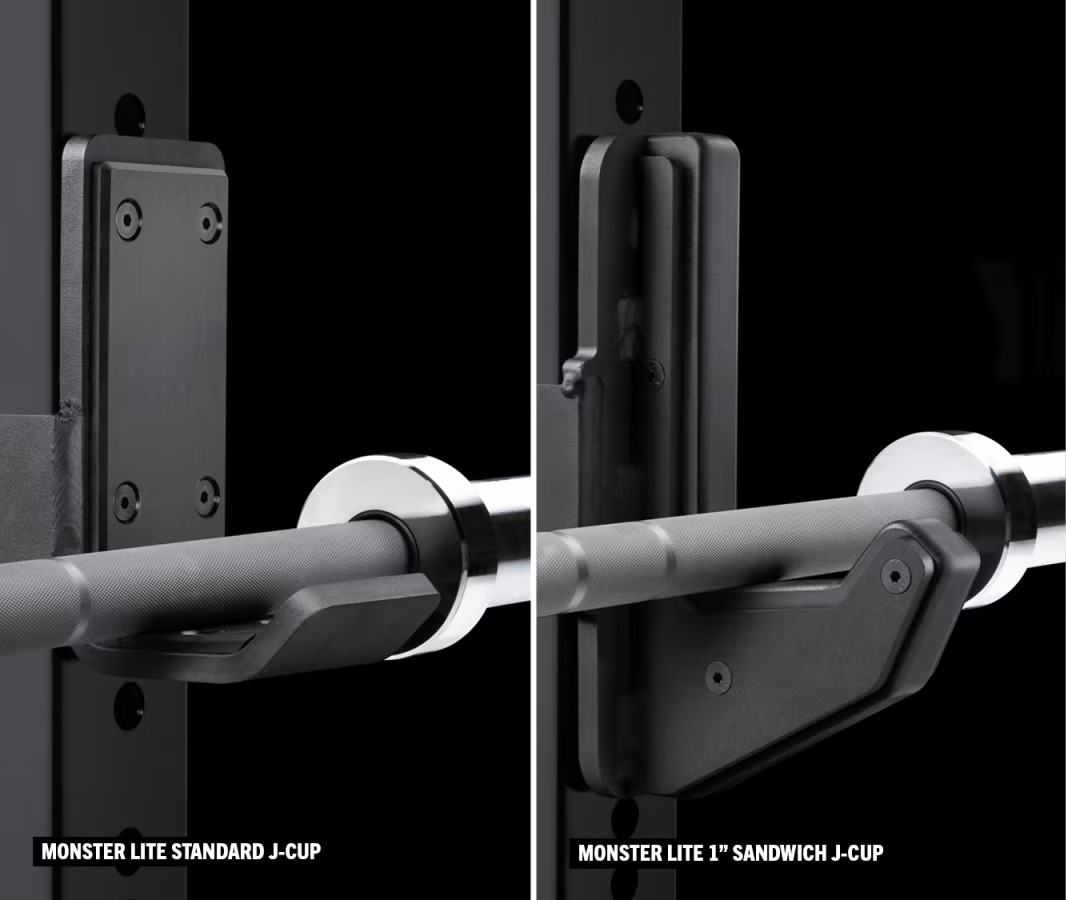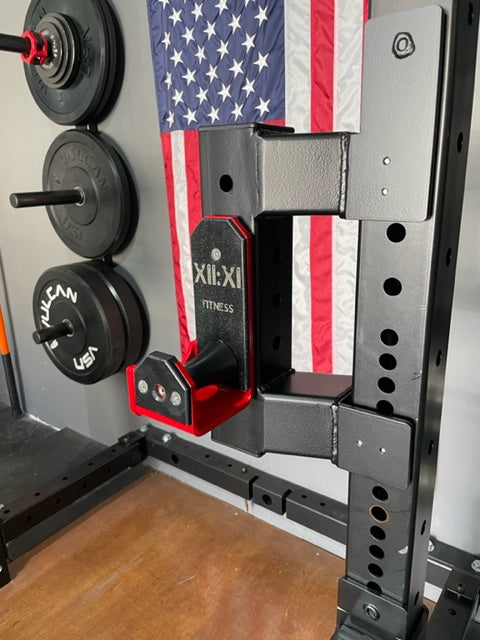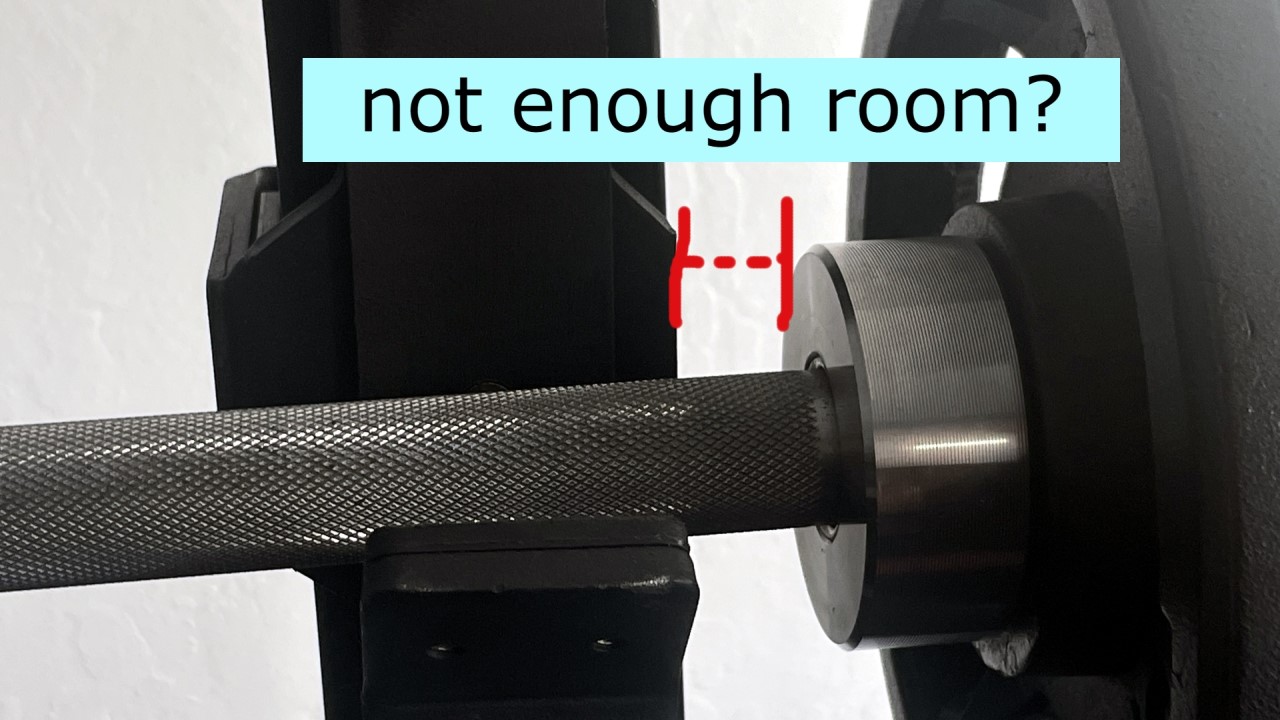Table of Contents
Introduction: The Issue
Sometimes the fit of your bar is so tight on your power rack that you’re left disappointed at how carefully you have to center the bar when re-racking. Is it supposed to be this hair-raising? Safety is meant to be a major point of having a rack!
7ft olympic bars of typical dimensions, usually 51.5″ between the inside collars, should all fit over any power rack, which is around 48″ wide. An issue comes into play for racks that are wider than that, no longer leaving enough allowance for lateral error when you try to re-rack.
Side note – If you’re trying to fit a 5ft or 6ft bar into a rack, unless it’s a women’s 6ft bar made to fit the same as a 7ft bar, you’re unfortunately out of luck. I’m not really talking about that here. The rack simply is not made for a bar of that size, and you would be doing yourself a favor to get a 7ft bar that will better facilitate important exercises. Again, a lighter “women’s” 6ft bar is an option if you need a lighter 33 lbs starting weight, or an even lighter aluminum bar.
At one point when everyone was first buying power racks for their home gym, manufacturers had 48″ wide racks with 2″x2″ or 2″x3″ uprights. When manufacturers started making them with 3″x3″ uprights to meet the changing demand, they had a choice as to whether to keep the rack 48″ wide or try to keep some of the inside space available to the user for wide grip exercises and make it 49″ wide. I believe some even went 50″, but I looked into it while writing this and can’t find any racks that wide. Anyway, 49″ might make it too hard to re-rack the bar consistently.
Rack Differences

Rogue Fitness makes their Monster and Monster Lite racks all 49″ outside width (their Infinity 2×3 racks, which are being slowly phased out, are 47″). Sorinex, Rep Fitness, Titan Fitness, and most others are 48″. Some others are 47″ or even more narrow. So this is more of an issue with Rogue’s current racks and maybe a few other brands. Rogue obviously is conscious of what they are doing, and it appears to be a choice to give users more room inside the rack.
If you don’t want to trust your ability to be only within 1 1/4″ off center at some point re-racking a squat, then this is a rare case where Rogue’s rack design is a drawback and you would be happier with another brand. I’m using a 48″ wide rack right now, and once in a while I still rack it on the bar shoulder. No way I’d feel as comfortable moving to a 49″ wide rack, or not without taking some measures as below.
Alternative J-Cups
For an elegant way to create more space, consider sandwich J-cups.
Depending on the design, sandwich J-cups are normally thinner than regular J-cups, creating some extra room on the outside of the bar and creating a standout to prevent the bar shoulders from hitting the rack at all.

See the above example. The 1″ wide Rogue sandwich J-cup on the right, made for their Monster Lite racks, gives you a solid 2″ of extra wiggle room (1″ on each side). They also make a Monster version. For both sizes of racks they also make 2″ wide sandwich J-cups, which for this issue would obviously not be as helpful.
Personally, I prefer roller J-cups, because I always want to re-center the bar without scraping things up. Unfortunately, I don’t know of any company that makes them as narrow as sandwich J-cups, nor sticking out so far, making them not helpful here. I only mention them as an example because your preference might preclude you from using sandwich J-cups as the solution.
Once you have sandwich J-cups, note that you can still run into a problem with your safety bars. Pin-and-pipe safety bars or safety straps give you more wiggle room than the safety bars style that some manufacturers have that match the width of the uprights.
Offset Attachments
Another possible solution is an offset J-cup design to bring them in an inch on each side. Currently I believe you would have to get them custom fabricated, as nobody mass produces them.
Or another way is to use any J-cups on some kind of bracket that is offset from the rack.

To show what I mean, the above was from Xii Xii Fitness, which closed in 2023. They brought the upright extensions in several inches to enable wide-grip squatters to grip outside the uprights. This kind of thing would also work to accommodate a bar that fits too tightly, but several inches is too much. The best design here would be a bracket that creates only about an inch offset inward and also sits the bar well in front of the rack to clear it.
Modifying Your Rack
A time-consuming solution, but possibly the cheapest. Cutting the crossmembers 2″ shorter and drilling new holes might be possible. Take a look at how things fit together, and you’ll be able to tell.
My understanding is you can take pieces to a local machine shop or welder to try to pay someone to cut the tubing down and drill new holes. You’ll have to disassemble your rack, plan the cuts, and reassemble it.
Using a Deadlift Bar Instead

Titan Fitness makes a specialty 7.5ft bar that is 55.5″ between the shoulders, oodles of room on either side of your rack. It’s sold as their TITAN Series Deadlift Bar. I mention Titan’s bar specifically because they keep a normal 28.5mm shaft diameter, making it feel more like an all-purpose bar than the 27mm shafts that other manufacturers put on this type of deadlift bar.


My rack has an outside dimension of 49″. Purchased a StrongArm Sport squat bar which measure 97.2 inches. No worries squatting with this bar.
That will do it! The StrongArm is the best priced specialty squat bar that I know of, and it’s not even close.
I have a Rogue RML-390F and bought the Bells of Steel 41” crossmember and pull-up bar to reduce the out to out dimension to 47”. I don’t have any issues with re-racking weights.
Good idea. I see BOS has all those parts for sale individually for their Hydra and Manticore racks that are compatible with Rogue. I’m going to add this to the article!
Regarding rack offset attachments, this site has some for 3×3 racks (similar to the Xii Xi one you posted above): https://lancaster-premier-powder-coating.myshopify.com/products/rack-offset-attachment?variant=43696361996598
Also, there’s one from Fortis Equipment. But I’m not sure of the specifications: https://www.fortisequipment.com/product/fortis-bar-holders/
I notice the shopify seller has the Xii Xi product in their photos, so it’s the exact one.
The Fortis one looks like it’s only a couple inches offset and might be useful for this application! I think I’ll add it to the article.